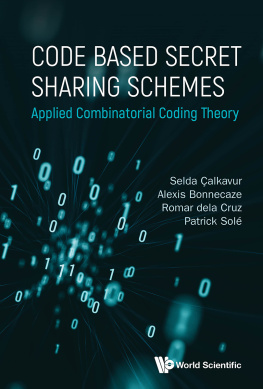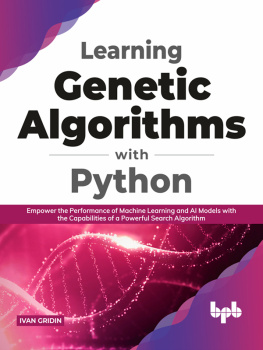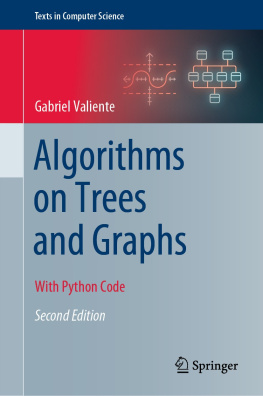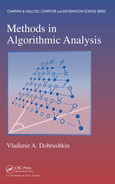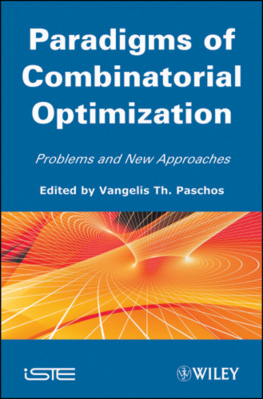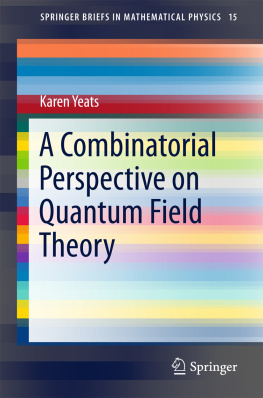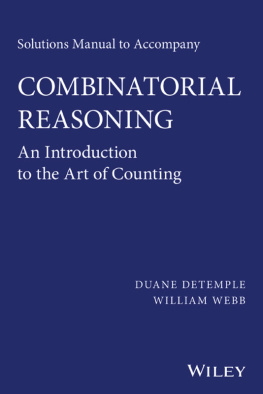Hu T.C. - Combinatorial algorithms
Here you can read online Hu T.C. - Combinatorial algorithms full text of the book (entire story) in english for free. Download pdf and epub, get meaning, cover and reviews about this ebook. year: 2002, publisher: Dover, genre: Children. Description of the work, (preface) as well as reviews are available. Best literature library LitArk.com created for fans of good reading and offers a wide selection of genres:
Romance novel
Science fiction
Adventure
Detective
Science
History
Home and family
Prose
Art
Politics
Computer
Non-fiction
Religion
Business
Children
Humor
Choose a favorite category and find really read worthwhile books. Enjoy immersion in the world of imagination, feel the emotions of the characters or learn something new for yourself, make an fascinating discovery.

Combinatorial algorithms: summary, description and annotation
We offer to read an annotation, description, summary or preface (depends on what the author of the book "Combinatorial algorithms" wrote himself). If you haven't found the necessary information about the book — write in the comments, we will try to find it.
Combinatorial algorithms — read online for free the complete book (whole text) full work
Below is the text of the book, divided by pages. System saving the place of the last page read, allows you to conveniently read the book "Combinatorial algorithms" online for free, without having to search again every time where you left off. Put a bookmark, and you can go to the page where you finished reading at any time.
Font size:
Interval:
Bookmark:

Copyright
Copyright 1982 by T. C. Hu
Chapters 9 and 10 and Appendices copyright 2002 by T. C. Hu and Man-Tak Shing
All rights reserved under Pan American and International Copyright Conventions.
Bibliographical Note
This Dover edition, first published in 2002, is an unabridged reprint of the original edition published in 1982 by Addison-Wesley Publishing Co., Inc. Reading, Mass., with the correction of some minor errors and the addition of two new chapters, two appendices and an enlarged index.
Library of Congress Cataloging-in-Publication Data
Hu, T. C. (Te Chiang), 1930
Combinatorial algorithms.[Enl. ed.] / T.C. Hu and M.T. Shing.
p. cm.
Includes bibliographical references and index.
9780486152943
1. Combinatorial analysisData processing. 2. Operations researchData processing. 3. Computer algorithms. I. Shing, Man-tak, 1953- II. Title.
QA164 .H8 2001
511.6dc21
2001042237
Manufactured in the United States of America
Dover Publications, Inc., 31 East 2nd Street, Mineola, N.Y 11501
To Dr. Ralph E. Gomory
who taught me integer programming
To my brother Deyi Hu
who taught me English
To the memory of my Aunt, Yu-Fen Hu
who taught me algebra and geometry
To the memory of my parents
Kwong and Mei-Yung
who gave me my wings
To my wife Dawn and my children
Andrew and Leslie who are
the wind beneath my wings
This book presents some combinatorial algorithms common in computer science and operations research. The presentation is to stress intuitive ideas in an algorithm and to illustrate it with a numerical example. The detailed implementation of the algorithms in PASCAL are in a separate manual. No background in linear programming and advanced data structure is needed. Most of the material can be taught to undergraduates while more difficult sections are only suitable to graduate students. Chapters can be read somewhat independently so that the instructor can select a subset of chapters for his course. This book should also be useful as a reference book since it contains much material not available in Journals or any other books.
Chapters One and Two can be used in a one quarter course in network theory or graph algorithms. Chapter One goes in-depth into several shortest-path problems and introduces a decomposition algorithm for large sparse networks. Chapter Two deals with network flows, and contains a large amount of new material, such as the algorithms of Dinic and Kazanov which have never appeared in English before, the optimum communication spanning tree and the description of PERT in terms of longest paths and cheapest cuts. Also in Chapter Two is a section on multi-terminal flows where a subset of nodes are terminal nodes.
Chapters Three and Four cover dynamic programming and backtrack (branch and bound) which are two general optimization techniques. Both topics are usually not covered in detail in computer science departments. Chapter Three introduces the concept of dynamic programming by using examples carefully selected to show the variety of problems solvable by dynamic programming. After the knapsack problem is solved, the periodic nature of the solutions is discussed. (The solution to the two-dimensional knapsack problem is based on the papers of Gilmore and Gomory.) This chapter ends with a brief discussion of the work of Dr. F.F. Yao. Chapter Four includes standard material on backtracking as well as a detailed description of pruning in a game tree. It also gives an example of the Monte Carlo technique of estimating the size of the decision tree.
Chapters Five and Six contain a large amount of new material which should be of interest to computer scientists and operations researchers. Chapter Five introduces the Huffman algorithm, the Hu-Tucker algorithm, including a new reconstruction phase, and the generalization of both algorithms to regular cost functions. This generalization is based on the paper by Hu, Kleitman and Tamaki. Chapter Five also describes and illustrates the Garsia-Wachs construction. Chapter Six deals with heuristic algorithms. It contains the one-point theorem of Magazine, Nemhauser and Trotter and the new bin-packing algorithm of Yao. The treatment of job-scheduling for the tree-constraint is a revision of the authors paper published in 1961.
The subject of Chapter Seven is matrix multiplications. This chapter contains two combinatorial results, the Strassens result on the multiplication of two large matrices and the results on the optimum order of multiplying a chain of matrices of different dimensions. Although the problem of optimum order can be solved by an O(n3) algorithm based on dynamic programming, the problem can now be solved by an O(nlogn) algorithm based on combinatorial insights. Since the subject of finding the optimum order is a book by itself, we give the main theorems on the subject and a heuristic O(n) algorithm which has a 15% error bound.
The final chapter, Chapter Eight, introduces the concepts of NP-complete problems. The purpose here is to give the reader some intuitive notions but not a complete treatment since a book has been published dealing with this subject in detail.
It is a pleasure to thank all persons who helped to make this book possible. To the National Science Foundation and Dr. J. Chandra and Dr. P. Boggs of the U. S. Army Research Office for their financial help. To Drs. F. Chin, S. Dreyfus, F. Ruskey, W. Savitch, A. Tucker, M. Wachs, F. Yao for reading various parts of the drafts. To Professor L. E. Trotter, Jr. and Professor Andrew Yao for reading the next-to-final version of the whole book and made many valuable suggestions. To Mrs. Mary Deo for her effort in editing the earlier versions. To Mrs. Annetta Whiteman for her excellent technical typing of so many versions of the book. To Ms. Sue Sullivan, for skillfully converting the material into the book formats using the UNIX system. To Mr. Y.S. Kuo for preparing the index and writing parts of the manual. And last but most to Dr. Man-Tak Shing, for writing the manual and his technical and general assistance throughout the writing and production.
La Jolla, California
October 19, 1981
T. C. Hu
The revised and expanded edition is really a new book because it has added two new chapters (9 and 10) with materials which have never been published in journals or any other forms. The new materials are the research results of the authors during the last seven years. Chapter 9 unifies many well-known algorithms and invites the reader to mix and invent new algorithms. Chapter 10 deals with the subject of getting minimum cuts in a network directly. Most papers in network flows deal with the flow first and obtain the minimum cut based on the Max Flow Min Cut theorem of Ford and Fulkerson. In Chapter 10, the goal is to get the n 1 fundamental minimum cuts of an undirected network, i.e., the Gomory-Hu tree. Our investigations on getting minimum cuts are far from completion. However, we have extended our deadline of delivering the manuscripts of Chapters 9 and 10 by more than one year. Hopefully, some of the insights in Chapter 10 would be of use to most readers.
This edition has also two new appendices. Appendix A updates the material in the first eight chapters of the first edition. Appendix B deals with the subject which we call network algebra. In vector spaces, we have vectors and scalars. In network algebra, we have circles and edges. In the special case of three circles and one edge, we can have the two-valued logic of the boolean algebra. Due to the time and space restrictions, we can only describe the intuitive ideas and illustrate them with numerical examples. Much more work needs to be done. Hopefully, we could write an entirely new book in the future.
Font size:
Interval:
Bookmark:
Similar books «Combinatorial algorithms»
Look at similar books to Combinatorial algorithms. We have selected literature similar in name and meaning in the hope of providing readers with more options to find new, interesting, not yet read works.
Discussion, reviews of the book Combinatorial algorithms and just readers' own opinions. Leave your comments, write what you think about the work, its meaning or the main characters. Specify what exactly you liked and what you didn't like, and why you think so.

